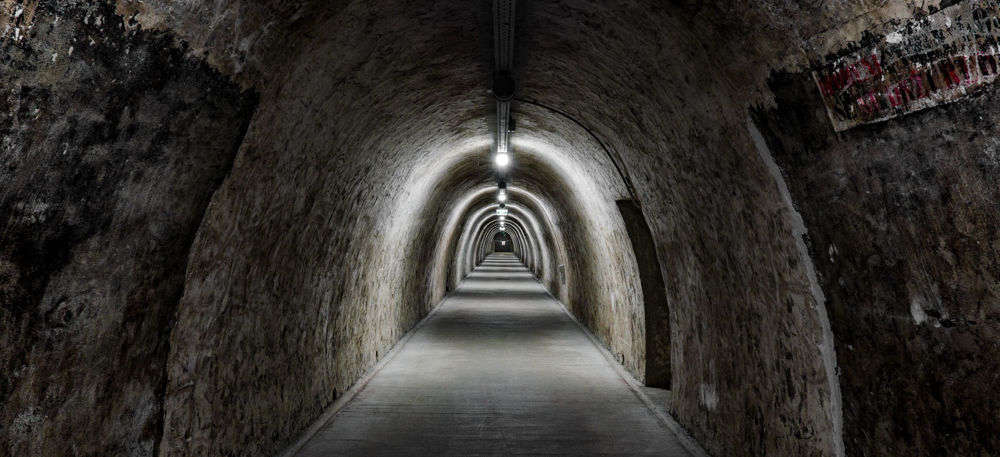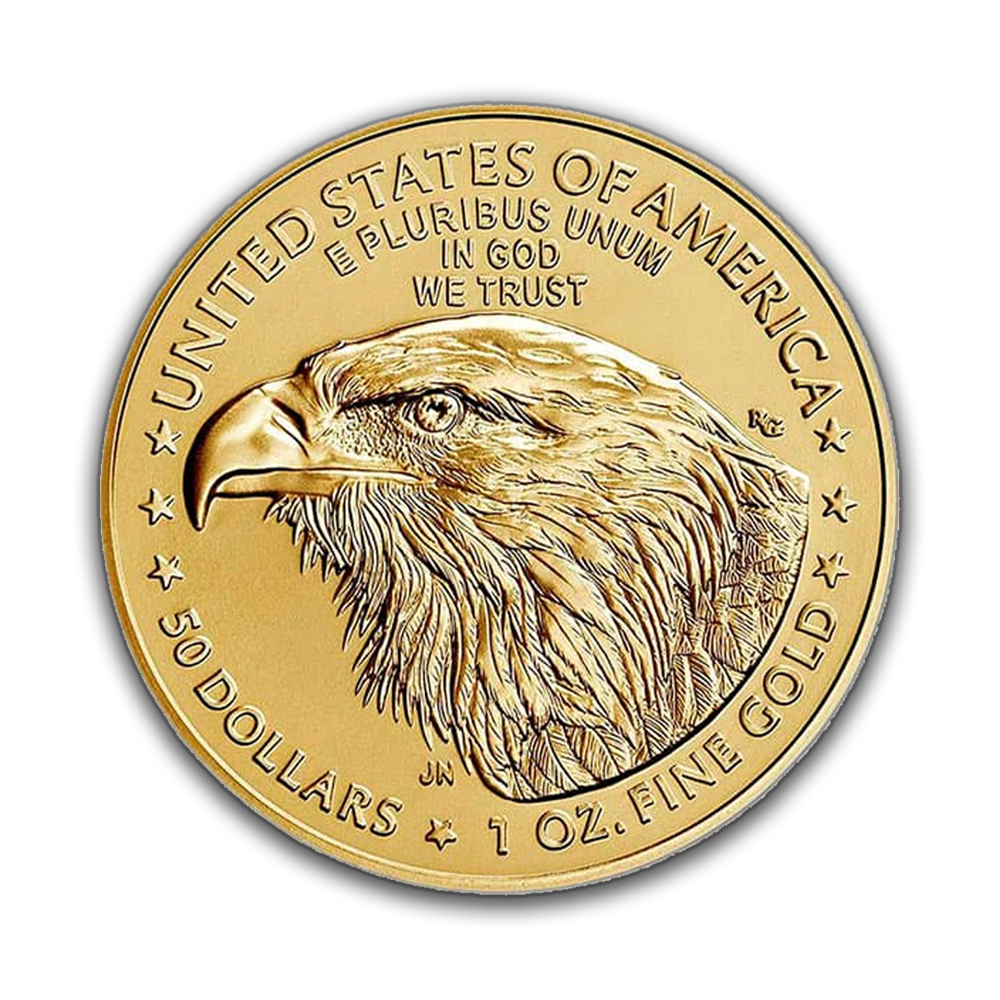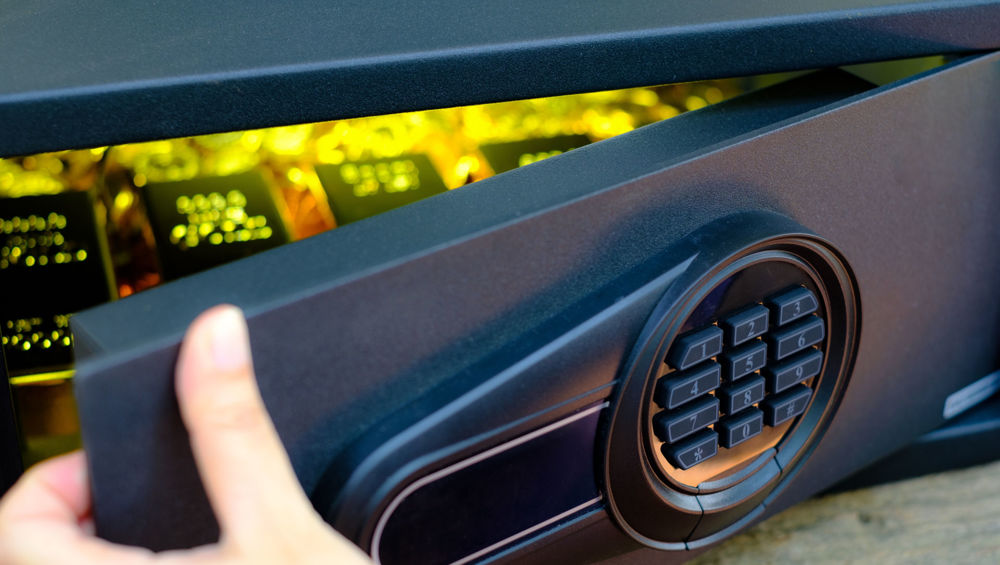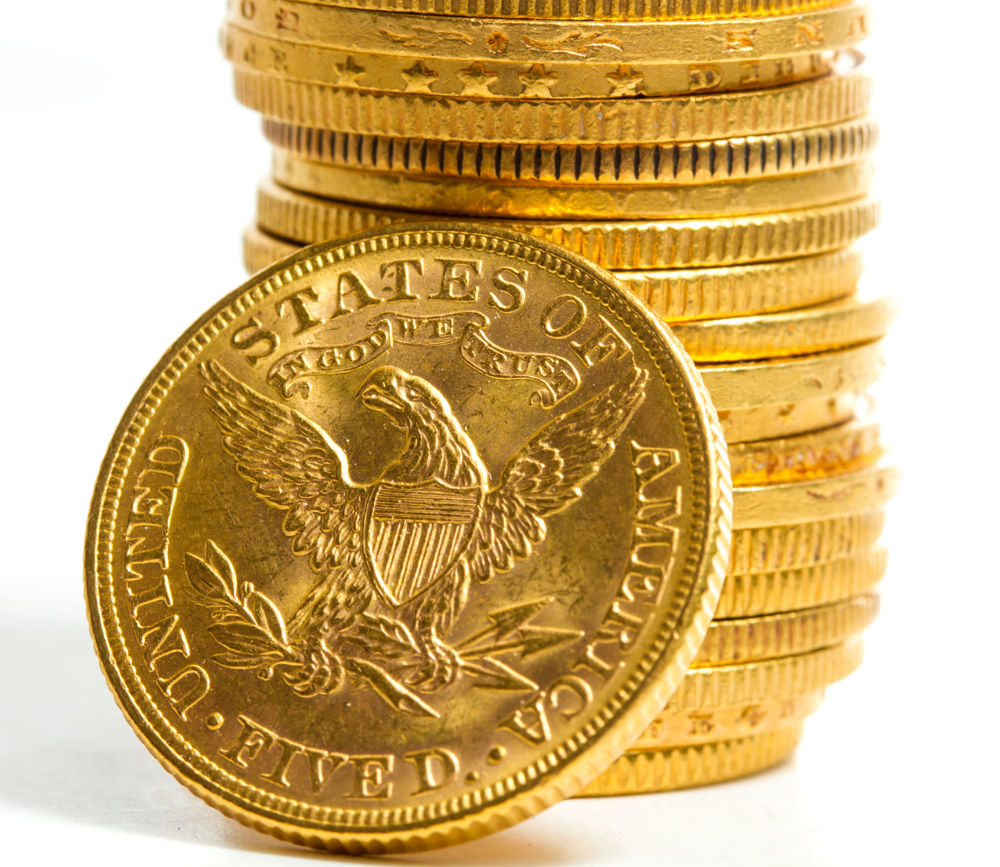Posted on May 06, 2022


Regardless of how good times are, there will always be people preparing for doomsday or “the end of the world as we know it” (TEOTWAWKI) and readying themselves to survive in a post-apocalyptic world. While the likelihood of a full-blown global catastrophe of civilization-ending scale is extremely improbable, there’s nothing wrong with being prepared for the worst.
Naturally, most preppers prioritize food, water, and fuel. A well-stocked shelter is great if you don’t have to go anywhere, but you can’t get very far carrying jugs of water and sacks of potatoes. In a doomsday scenario, we expect governments to cease to function, stripping fiat currencies of any value, making dollars nothing but a memento of the past.
When inflation strikes and fiat currencies are devalued, investors and survivalists alike often turn to the earliest currencies used by humans: precious metals and gemstones.
 Gold has been cherished and traded by people worldwide for thousands of years, serving as a form of currency for well over a millennium. Gold doesn’t satisfy any biological requirement. It’s neither food nor water, and, put simply, we really don’t need it to live.
Gold has been cherished and traded by people worldwide for thousands of years, serving as a form of currency for well over a millennium. Gold doesn’t satisfy any biological requirement. It’s neither food nor water, and, put simply, we really don’t need it to live.
Nevertheless, people have been known to risk life and limb in pursuit of gold, from gold rushes and mining collapses to robberies gone wrong. The reality of gold is that it has historically held its value despite its uselessness as food.
The value of gold is so high simply because people are willing to pay for it. Still, gold has several unique qualities that justify its impressive price.
First and foremost, gold is beautiful. It’s a lustrous metal with a one-of-a-kind color (in fact, one of only two elemental metals that have a color) that is both striking and pleasing to the eye. It's hard to look away once you get a glimpse of gold. That smooth, buttery glow is unlike anything else.
Gold’s beauty is only one characteristic that makes it ideal for jewelry: the yellow metal is also quite malleable and can easily be shaped or molded to fit its purpose. In addition, gold doesn’t tarnish or rust, which is why ancient gold coins still shine brightly. Gold is also highly conductive, proving itself useful in manufacturing electronics and medicine.
For anyone in doubt of gold’s accepted value, remember that the United States (and many other countries) once had a gold standard, linking the value of its currency to gold. The purpose of the gold standard was to prevent inflation and keep a nation’s government and monetary policy tethered to reality.
There are many forms of gold. But all are not equal. Here are the top factors of gold for using it as a currency.
All gold is not alike, and it’s crucial for anyone who wants to own gold to understand which types of gold are best suited for use as a currency or for barter. If the world as we know it comes to a screeching halt, it’s the most trusted and easily recognized pieces that will fetch the highest value. Gold of unknown or questionable origins will be met with skepticism, while reputable coins and brand names will be widely recognized and much more likely to be accepted.
The best brand names in gold are the refineries and mints known to produce top-quality products. These producers have a long and reliable history of manufacturing high-purity gold. If you want the best gold, look for coins made by the U.S. Mint, The Royal Mint (UK), Canadian Royal Mint, Austrian Mint, Perth Mint, and more. Gold bars bearing the Valcambi brand are considered the cream of the crop, though others such as Engelhard and Johnson Matthey are held in high esteem among gold traders.
Gold products from leading Swiss refineries like Valcambi, PAMP, and Argor-Heraeus offer the recognizability and trust needed for a quick sale and can be ideal assets for any survivalist. In terms of specific products, owning gold that is easily identified is key. American eagles, Canadian maple leafs, South African Krugerrands, and Australian kangaroos are all excellent examples of gold coins that are well-known and frequently traded.
 The size or weight of the gold you buy is extremely important, mainly because you’ll want to be able to trade the appropriate amount of gold for a good or service. “Making change” in gold may not be possible, so you’ll want to have smaller denominations on hand. Large bars can’t easily be broken up, and you don’t want to have to trade a 10 oz bar of gold for a low-value item. Besides that, toting around 400 oz gold ingots (which, for the record, weigh roughly 27.5 pounds apiece) is extremely impractical for obvious reasons.
The size or weight of the gold you buy is extremely important, mainly because you’ll want to be able to trade the appropriate amount of gold for a good or service. “Making change” in gold may not be possible, so you’ll want to have smaller denominations on hand. Large bars can’t easily be broken up, and you don’t want to have to trade a 10 oz bar of gold for a low-value item. Besides that, toting around 400 oz gold ingots (which, for the record, weigh roughly 27.5 pounds apiece) is extremely impractical for obvious reasons.
While smaller denominations of gold are great for everyday trading, you won’t want the burden of carrying hundreds (or thousands) of tiny pieces of gold. As with most things, it’s important to strike a balance, and in this case, it would be wise to have pieces in various sizes, including a few larger bars (e.g., 10 oz, 1 kg, or 100 oz) and plenty of smaller bars and coins such as 1 g bars and 1/2 or 1 oz American Eagles. Another great option is the Valcambi CombiBar, a single bar composed of easily-divisible pieces designed to be individually broken off and traded.
Here are some resources on what to consider when purchasing gold.
In a world where fiat currency fails, you’ll want gold for what it is: a store of value. Buying gold as an insurance against a worst-case scenario isn’t about finding rare coins. Search for high-quality gold with the lowest possible premium above the spot price to prepare for a catastrophe. (The spot price is the current market trading price for an ounce of raw, unrefined gold.)
Turning that raw gold into a high-purity bar or coin costs a company money, which is why there is always a premium above the spot price when you buy gold bullion. As a hedge against currency failure, you’ll want to try and find gold from recognizable brands with the lowest premium above the spot. However, keep in mind that some products, like American eagles and Canadian maple leaf coins, are worth paying a higher premium, thanks to their well-known and widely respected quality. The ideal solution is a healthy mix of coins and bars from the world’s most popular refiners and mints for most people.
To learn more about precious metals premiums, check out these resources:
Gold is by far the most popular of the precious metals for investing, but it isn’t the only one that holds its value well. Other precious metals that hold their value include silver, platinum, and palladium. Though gold is likely the top choice for the job, silver, platinum, and palladium are also excellent stores of value. Silver, in particular, presents a compelling case because its value per ounce is far lower than that of the other precious metals, making it useful for small transactions.
Of course, it’s still quite heavy, so hauling around a 100 oz silver bar (equivalent in value to 1.25 ounces in gold) would be like carrying a seven-pound baby. If you’re interested in other precious metals options, you can apply the same principles used for choosing gold products to any of these alternatives.
In the event of a worst-case scenario, you’ll need to have physical gold in your hand, readily accessible at a moment’s notice. For this reason, buying gold stocks or ETFs is untenable, as most of these investments will not let you take physical possession of the gold. If the financial system fails, the companies that manage these investments or store the gold are at risk of failure. Should the business decide to liquidate, your investment would be paid out in fiat currency, not gold.
 Some people choose to store their gold in a bank safe deposit box. Though this is a better option than buying gold stocks or funds, it’s far from perfect. In a bank vault, your assets can, in theory, be seized by the government. There have even been cases of the government seizing the assets of honest, law-abiding citizens. The simple fact is that if you can’t hold the gold in your hand, it isn’t truly yours.
Some people choose to store their gold in a bank safe deposit box. Though this is a better option than buying gold stocks or funds, it’s far from perfect. In a bank vault, your assets can, in theory, be seized by the government. There have even been cases of the government seizing the assets of honest, law-abiding citizens. The simple fact is that if you can’t hold the gold in your hand, it isn’t truly yours.
If you’re preparing for the worst, a home safe is the most viable option since it offers both the security and accessibility you need. Home safes are very secure, but there is always the risk of fire damage or theft.
To deter theft of the entire safe, a home safe should be sizable, so a burglar can’t easily carry it away. An off-site hidden cache, like a treasure map, may appeal to some but brings with it the risk of accidental loss or a lucky hiker stumbling upon your stockpile. No matter where you store your gold, you should always protect your investment with insurance even if there’s no apocalypse.
If you’re looking for more information on storing your precious metals safely, here are some resources:
There’s no shortage of options for how and where to buy gold. The first step in deciding where to buy gold is choosing whether you want to buy in person or online. If you prefer buying gold face-to-face, you can visit local coin dealers and pawnshops or attend coin shows and auctions. Buying in person has the benefit of being able to see the actual gold before you pay for it. Still, this luxury is typically accompanied by a smaller selection and less availability, higher prices, and limited hours of operation.
Online gold dealers usually have the best available pricing, secure assay packaging that can help with fast recognition and general acceptability, and free shipping for certain orders. When you buy online, be sure to verify that the gold is being packaged and shipped properly. Gold should come in its original individual packaging, in sleeves, or in monster boxes. If your shipment doesn’t already include insurance, you should purchase it.
Before purchasing any gold, you should study prices and premiums to understand what a particular product is worth. Coin prices can vary based on several factors (other than the price of gold itself), like how many coins were minted that year and the coin’s condition. Your research should also include checking if there’s a current market for the pieces you’re interested in buying. A gold coin that doesn’t have a market for trading isn’t much use to anyone besides a collector. If you’re buying gold in preparation for a cataclysm, look for gold with an active market and high liquidity.
Some companies offer pre-packaged gold in tiny denominations, branded specifically for the purpose of surviving a catastrophe. These survival packs are convenient but are usually overpriced or offer inferior products, so you should steer clear of these prep packs. Instead, take your time and do your own research and study the resources below to better understand the market and get the best gold at the lowest prices.
There’s no magic number for how much gold to buy to prepare for a worst-case scenario. This decision is personal and based entirely on your individual resources and preferences. According to thebalance.com, as a general rule of thumb, many experts suggest limiting gold to no more than 5% - 10% of your portfolio.
U.S. News and Forbes found most financial advisors agree that, for long-term investments, individuals should not invest more than 10% of their portfolio in gold (although some recommend a higher allocation in gold bullion).
When you start collecting gold for insurance against a worst-case scenario, take your time to find a mix of what makes sense to you. Most experts recommend diversifying your investments; your gold stash can be diversified by purchasing a combination of coins, bars, and rounds. If you’re working with a tighter budget and can only afford a few pieces, start with smaller denominations, like 1/10 or 1/4 oz gold coins.
 Creating a checklist can help you stay on track and establish a store of gold for emergency insurance. You want to begin by determining how much gold, silver, platinum, and palladium you want to keep as a safe haven. Once you have a good idea of how much of each of these precious metals you’d like to have, you should prepare to receive the physical bullion. Since you’ll need to have your gold at home and within easy reach,
Creating a checklist can help you stay on track and establish a store of gold for emergency insurance. You want to begin by determining how much gold, silver, platinum, and palladium you want to keep as a safe haven. Once you have a good idea of how much of each of these precious metals you’d like to have, you should prepare to receive the physical bullion. Since you’ll need to have your gold at home and within easy reach,
A sample checklist might look something like this:
Preparing for a worst-case scenario by building emergency reserves of gold is never a one-size-fits-all solution, nor is it something you do once and forget about. Every individual is different and will want to insure against disaster using a slightly different strategy.
Here are some resources for preparing for emergencies and disasters.
Regardless of the exact strategy you want to employ, you should regularly review and rebalance your cache of gold to make sure it continues to meet your needs. If your net worth has increased or you see a buying opportunity, maybe you decide it’s a good time to purchase some additional gold. If you’re worried about inflation or civil unrest, you might decide you want to shore up your gold stash.
There’s no right answer for how much physical gold to own, so keep challenging yourself and re-evaluating your preparedness as you go.